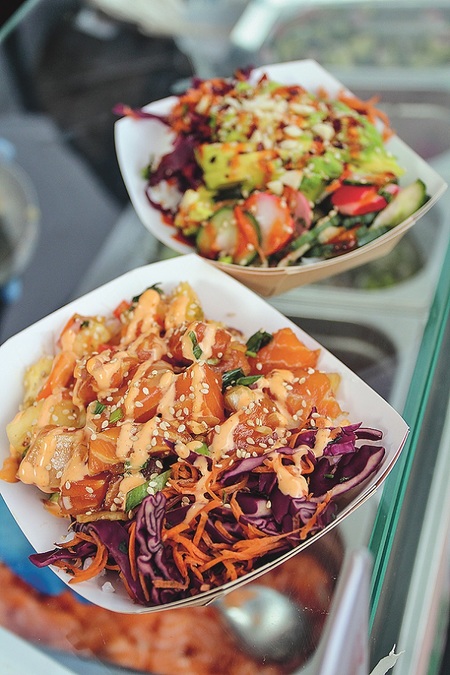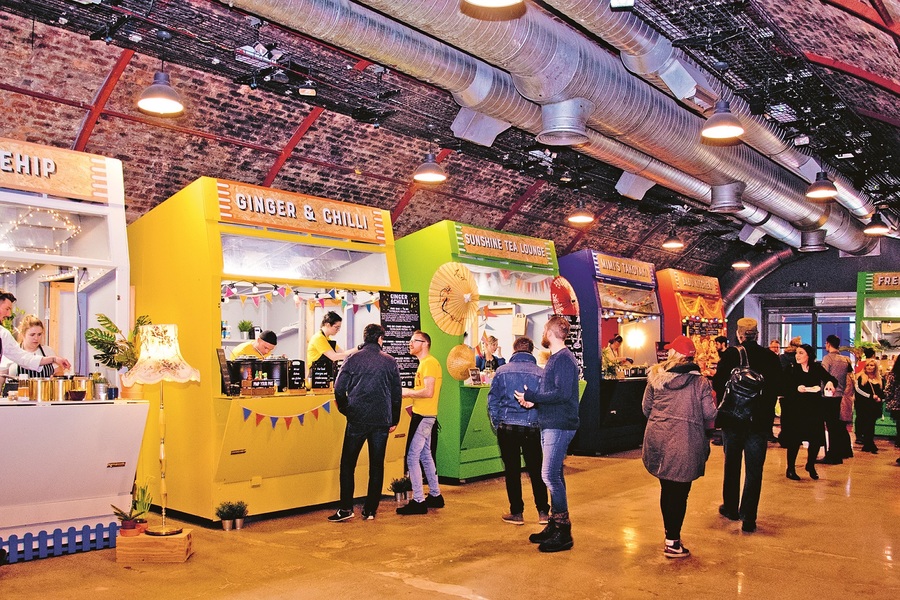Ailidh Forlan on her guide to Scotland's street food
We speak to Ailidh Forlan ahead of her new guide to the wild world of Scottish street food
“I think what the publishers didn’t realise is that street food doesn’t really exist in January or February because... y’know... it’s freezing outside.” That’s the kind of local knowledge that’s always worth bringing in, and when it comes to the world of modern street food, Ailidh Forlan is well-placed to get people up to speed.
A judge at this year’s Scottish Street Food Awards, long-time member of The List’s food and drink review team and one of Scotland’s go-to foodies on Instagram, Forlan’s latest project brings much of her street food knowledge together in one place. Street Food Scotland profiles over 60 of the country’s best vans, traders and markets in a book that’s as comprehensive as it is drool-inducing.
Yet when we catch up with Forlan, she admits that she wasn’t initially convinced by the idea. “It wasn’t my idea to write a book,” says Forlan, “[Black & White] came to me with that. At first I thought ‘Oh God’ – when I tried to write my university dissertation, which was 10,000 words, I had numerous breakdowns... I was like ‘I cannot possibly do this’.
“Then I was like ‘What am I talking about?’ I wrote my dissertation on Chaucer – which, hilariously, you can actually buy on Amazon next to [Street Food Scotland] – but this I was actually really passionate about.” Soon enough, she found herself running up against a slightly different problem. “I wrote the first 25,000 words without blinking, I guess I just got really stuck into it.
“I think I’m naturally a longer writer. I mean, they asked for 30-40,000 words and I wrote 67,000 so, yeah…”
That passion and dedication to the modern world of street food shines through in the book and in conversation. “It’s a really difficult thing because I’ve built up a career on reviewing restaurants, so I can’t come in and just slate them all,” says Forland, “but to an extent, there’s something so much more immediate and fresh about [street food].
“There aren’t heat lamps, it’s given to the customer instantly, it’s not waiting about for the waiter, in some locations, to decide whether they can be arsed to take it to the customer. You’re not looking at pages and pages of food where the restaurant feels like they have to offer it to cover all dietary requirements; it’s just someone who can cook one thing and do it really well.
“If I had to choose between a day in a new city going from restaurant to restaurant, or even three really good restaurants, I just wouldn’t do it – I would just beeline for an amazing street food market where I can sample ten dishes throughout the day and just get the best of everything.”
The Scottish street food scene is still in its early stages, comparatively speaking, and many of the same issues that have dogged the scene for years remain. Unsympathetic local bureaucracy, the availability of pitches, the weather – the classic menu of legitimate gripes.
Yet the continued success of a set of street food hubs in Edinburgh and Glasgow has allowed vendors to get regular slots, build a bit of a rep, and maybe even dodge the rain from time to time. “I think it was Jeremy at [Edinburgh street food van] Chick and Pea who made a great point,” says Forlan. “Maybe my book shouldn’t even be called Street Food Scotland; in Scotland, street food is very rarely sold on the street.”
That makes places like The Pitt in Leith, Platform at the Arches (RIP), Dockyard Social in Finnieston and Big Feed in Govan crucial in Forlan’s eyes. “For the traders, it provides a solid base. They’ve got a roof over their heads, and because these particular places are big enough now, there’s this guaranteed footfall so they always know roughly how many people they should be cooking for.
“From a punter's point of view, I love the street food that isn’t in these places – like Francesco Bani of Wanderers Kneaded. He has a pitch on The Meadows, and I think that’s great, but how often I will venture out to him for dinner and sit in the cold is a lot less than I would go to The Pitt. I’ve got vegan friends, gluten-free friends, the works; it’s nice for us all to have something to eat at the same time without feeling too constricted.”
That ability to set your own parameters is one of the traits that street food has in its favour; the other is that there’s just something that’s inherently interesting about it. “I won’t say I’m bored of restaurants,” says Forlan. “I just want a better experience every time. Maybe I’m a difficult person to please. I love, for instance, teppanyaki experiences and things like that; I love The Table on Dundas Street where you can see Sean [Clark] cooking in front of you.
“Street food gives you all of that, the smells, the colours, watching your food being cooked in front of your eyes, all fresh – I think people want that.” And while many conventional restaurants go to weird lengths to keep the dining room and kitchen separate, the immediacy of street food makes for plenty of opportunity for those of us who love sniffing and staring at dishes as they fly past.
Forlan says: “No-one’s trying to be too fancy or too fine-dining; no-one’s making emulsions or foams or – what is it – spherification? It’s just nice to take it back.
“A lot of street food looks good – there’s a limit to how good you can make something in a Vegware tray look – but it’s not all style over substance. It’s raw, gritty food that’s all about good ingredients.”
When asked for some standout traders from the five-dozen featured in the book, Forlan goes deep into the memory banks to pull out a few examples. Smoke and Soul from Aberdeen with their pulled pork macaroni cheese (“the kind of comfort food you want to eat when it’s cold in Scotland”), Glasgow’s Gallus Pasta (“the most incredible pasta you’ll ever eat”) and the meaty wonders of Glasgow food truck Fatboys.
But the truth is that Scotland’s packed with great, affordable and exciting food. “Street food is seriously all-inclusive,” says Forlan. "Throughout the book, there are pictures of people of all ages, genders, races, dogs, children, there is absolutely everyone in there. That’s how food and drink experiences should be.”
Street Food Scotland is published on 24 Oct via Black & White Publishing; launch event at The Pitt, 125-137 Pitt St, Leith, 24 Oct, 6-9.30pm, £5.50, tickets here
instagram.com/plateexpectations/


